 W
WThe African golden wolf is a canine native to North Africa and the Horn of Africa. It is the descendant of a genetically admixed canid of 72% gray wolf and 28% Ethiopian wolf ancestry. It occurs in Senegal, Nigeria, Chad, Morocco, Algeria, Tunisia, Libya, Kenya, Egypt, and Tanzania. It is listed as least concern on the IUCN Red List. In the Atlas Mountains, it was sighted in elevations as high as 1,800 m (5,900 ft). It is primarily a predator, targeting invertebrates and mammals as large as gazelle fawns, though larger animals are sometimes taken. Its diet also includes animal carcasses, human refuse, and fruit. The African golden wolf is a monogamous and territorial species; offspring remain with the family to assist in raising their parents' younger pups.
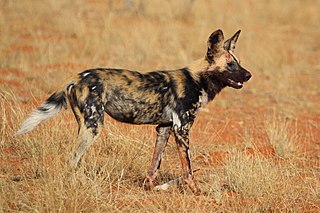 W
WThe African wild dog, also called the painted dog, or Cape hunting dog, is a canine native to sub-Saharan Africa. It is the largest indigenous canine in Africa, and the only extant member of the genus Lycaon, which is distinguished from Canis by dentition highly specialised for a hypercarnivorous diet, and a lack of dewclaws. It is estimated that about 6,600 adults including 1,400 mature individuals live in 39 subpopulations that are all threatened by habitat fragmentation, human persecution and outbreaks of diseases. As the largest subpopulation probably consists of less than 250 individuals, the African wild dog is listed as endangered on the IUCN Red List since 1990.
 W
WThe brown hyena, also called strandwolf, is a species of hyena found in Namibia, Botswana, western and southern Zimbabwe, southern Mozambique and South Africa. It is currently the rarest species of hyena. The largest remaining brown hyena population is located in the southern Kalahari Desert and coastal areas in Southwest Africa. The global population of brown hyena is estimated by IUCN at a number between 4,000 and 10,000 and its conservation status is marked as near threatened in the IUCN Red List.
 W
WThe Cape wild dog, also known as the South African wild dog, Cape hunting dog, or the painted wolf, is the nominate subspecies of African wild dog native to Southern Africa.
 W
WThe coastal black-handed titi is a species of titi, a type of New World monkey, endemic to Brazil.
 W
WThe Congo rope squirrel is a species of rodent in the family Sciuridae. It is found in Angola, Democratic Republic of the Congo, and Namibia. Its natural habitats are moist savanna, subtropical or tropical dry shrubland, and rocky areas.
 W
WThe crested capuchin or robust tufted capuchin is a species of robust capuchin monkey. It is endemic to Brazil. It was formerly considered a subspecies of the black capuchin but is now considered by some to be a separate species.
 W
WThe Daubenton's free-tailed bat or Daubenton's winged-mouse bat is a species of bat in the family Molossidae. It is found in Central African Republic, Democratic Republic of the Congo, Ivory Coast, and Senegal. Its natural habitats are subtropical or tropical dry forests and dry savanna. It is threatened by habitat loss.
 W
WGeoffroy’s spider monkey, also known as the black-handed spider monkey or the Central American spider monkey is a species of spider monkey, a type of New World monkey, from Central America, parts of Mexico and possibly a small portion of Colombia. There are at least five subspecies. Some primatologists classify the black-headed spider monkey, found in Panama, Colombia, and Ecuador as the same species as Geoffroy's spider monkey.
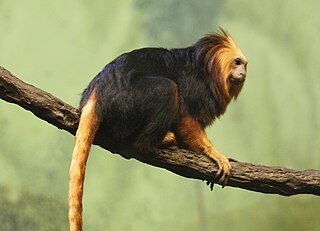 W
WThe golden-headed lion tamarin, also the golden-headed tamarin, is a lion tamarin endemic to Brazil. It is found only in the lowland and premontane tropical forest fragments in the state of Bahia, and therefore is considered to be an endangered species. It lives at heights of 3–10 metres (9.8–32.8 ft). Its preferred habitat is within mature forest, but with habitat destruction this is not always the case. Several sources seem to have different information on the number of individuals within a group, and the type of social system that may be apparent. The golden-headed lion tamarin lives within group sizes ranging from 2 to 11 individuals, with the average size ranging from 4 to 7. According to various sources, the group may consist of two adult males, one adult female, and any immature individuals, one male and one female and any immature individuals, or there may be one producing pair and a varying number of other group members, usually offspring from previous generations. There is not much known on its mating system, but according to different sources, and information on the possible social groups, it can be assumed that some may practice monogamous mating systems, and some may practice polyandrous mating systems. Both males and females invest energy in caring for the young, and all members of the group also help with juvenile care.
 W
WThe Guinea baboon is a baboon from the Old World monkey family. Some (older) classifications list only two species in the genus Papio, this one and the hamadryas baboon. In those classifications, all other Papio species are considered subspecies of P. papio and the species is called the savanna baboon.
 W
WThe leopard seal, also referred to as the sea leopard, is the second largest species of seal in the Antarctic. Its only natural predator is the killer whale. It feeds on a wide range of prey including cephalopods, other pinnipeds, krill, birds and fish. It is the only species in the genus Hydrurga. Its closest relatives are the Ross seal, the crabeater seal and the Weddell seal, which together are known as the tribe of Lobodontini seals. The name hydrurga means "water worker" and leptonyx is the Greek for "small clawed".
 W
WLeschenault's rousette is a species of fruit bat. The scientific name of the species was first published by Desmarest in 1820.
 W
WThe maras are a genus (Dolichotis) of the cavy family of rodents. They are the sole extant representatives of the subfamily Dolichotinae. These large relatives of guinea pigs are common in the Patagonian steppes of Argentina, but also live in Paraguay and elsewhere in South America. Maras are the fourth-largest rodent in the world, after capybaras, beavers, and porcupines, reaching about 45 cm (18 in) in height.
 W
WThe Nicaraguan spider monkey, is a subspecies of Geoffroy's spider monkey, a type of New World monkey, from Central America. It is native to Nicaragua and parts of Costa Rica closest to Nicaragua plus the Guanacaste peninsula. The population in Guanacaste and much of Nicaragua is sometimes considered to be a separate subspecies, A. g. frontatus. But other authorities consider A. g. frontatus to be a synonym of A. g. geoffroyi.
 W
WThe North American beaver is one of two extant beaver species. It is native to North America and introduced in South America (Patagonia) and Europe. In the United States and Canada, the species is often referred to simply as "beaver", though this causes some confusion because another distantly related rodent, Aplodontia rufa, is often called the "mountain beaver". Other vernacular names, including American beaver and Canadian beaver, distinguish this species from the other extant beaver species, Castor fiber, which is native to Eurasia. The North American beaver is an official animal symbol of Canada and is the official state mammal of Oregon and New York.
 W
WThe northern ghost bat is a bat species from South America, Trinidad, and Central America. It is a relatively rare, completely white, insectivorous bat, with an unusual sac at the base of its tail.
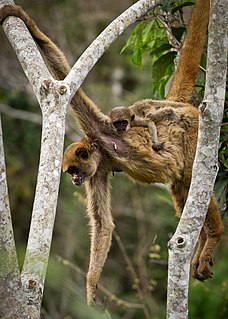 W
WThe northern muriqui is an endangered muriqui or woolly spider monkey species endemic to Brazil. It is unusual among primates in that it shows egaliterian social relationships. It is found in the Atlantic Forest region of the Brazilian states of Rio de Janeiro, Espírito Santo, Minas Gerais and Bahia. Muriquis are the largest species of New World monkeys. The northern muriqui can grow up to 4.3 ft long. It feeds mainly on leaves and twigs, but will also eat fruit. It often hangs upside-down by its prehensile tail while eating.
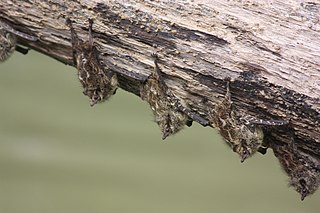 W
WThe proboscis bat is a bat species from South and Central America. Other common names include Long-nosed proboscis bat, sharp-nosed bat, Brazilian long-nosed bat and river bat in English, and murciélago narizón in Spanish. It is monotypic within its genus.
 W
WThe red fruit bat or red fig-eating bat is a species of bat in the family Phyllostomidae, in the monotypic genus Stenoderma. It is found in Puerto Rico and the U.S. Virgin Islands.
 W
WThe rock cavy or mocó is a cavy species endemic to eastern Brazil, that has been introduced to the Atlantic island of Fernando de Noronha.
 W
WThe Sunda stink badger, also called the Javan stink badger, teledu, Malay stink badger, Malay badger, Indonesian stink badger and Sunda skunk, is a mammal native to Indonesia and Malaysia. Despite the common name, stink badgers are not closely related to true badgers, and are, instead, Old World relatives of the skunks.
 W
WTemminck's red colobus is a type of red colobus monkey from the Gambia, Casamance, Guinea-Bissau and northwestern Guinea. It has historically been regarded as a subspecies of the western red colobus, and the Integrated Taxonomic Information System maintains this classification, but many recent taxonomies classify it as a separate species.
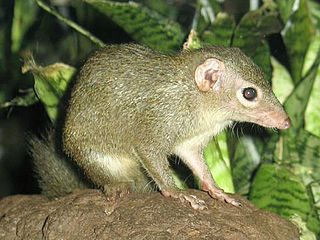 W
WThe common treeshrew is a small mammal in the treeshrew family Tupaiidae, and is native to Thailand, Malaysia, and Indonesia. It has been listed as Least Concern by IUCN as it remains common and displays some adaptability to ongoing habitat loss.